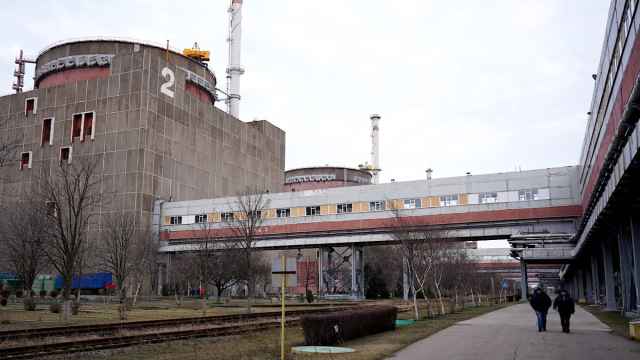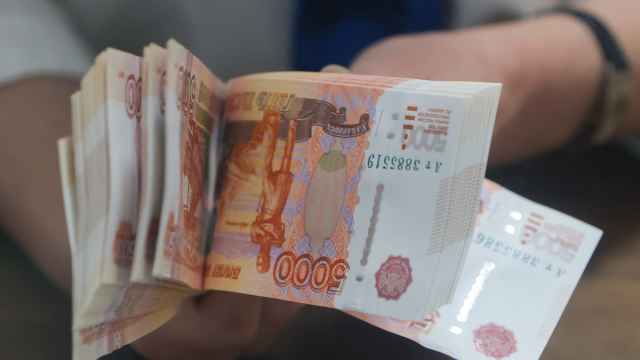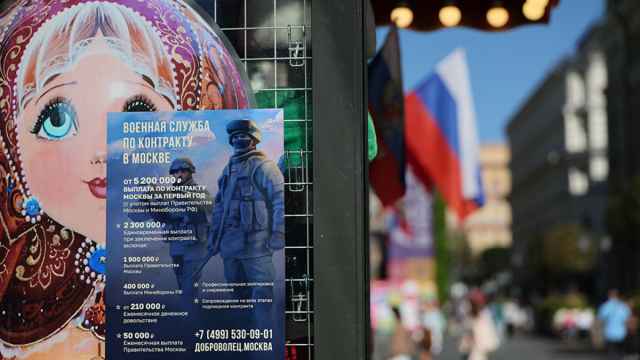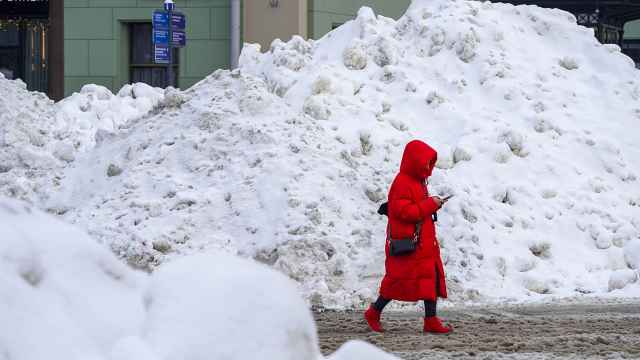On April 25, 1945, U.S. and Soviet armies linked up at the Elbe River, which meant, as a BBC broadcast of the time exulted, that Nazi Germany had been “split clean in half.” The actual first encounter was a casual, accidental meeting between an American G.I. and a lone Kazakh horseman. Two guys staring dumbfounded at each other does not make for the sort of heroic military imagery that all nations seem to favor. And so a picture was staged — Soviet and U.S. troops meeting on a blasted bridge reaching out the hand of friendship, solidarity and victory.
Photographers of the time were seeking the iconic image of victory, inspired by the photograph of the U.S. Marines planting the U.S. flag on Iwo Jima, taken on Feb. 23, 1945. Yevgeny Khaldei, the great Soviet war photographer, had that image in mind when recreating the planting of the Soviet flag on the Reichstag in Berlin on May 2, 1945. The image was indeed dramatic and heroic, including some billowing smoke that had been added in the darkroom for effect. The darkroom was also required for a little subtraction as well. One of the soldiers raising the Soviet flag was wearing two wristwatches, at least one of which had to have been looted.
Khaldei himself did not benefit greatly from this image or any of his war photography, shunned as a Jew during the period of toxic postwar anti-Semitism.
Many of the players in these three famous photographs had ironic fates. Of the six Marines who raised the famous flag, three were killed in the subsequent battle, one’s heart torn out by friendly fire. The main Soviet soldier in the Elbe picture turned out to be a Pole who had been “drafted” into the Red Army and after the war “immigrated” to the United States, two bland verbs that no doubt conceal painful and dramatic events. He ended up running a gas station in Milwaukee.
I must admit to having been taken in by the photograph of the Elbe linkup. Convinced that Moscow and Washington should build identical statues of the “event” to remind both countries of their achievements in a common cause, I met with then-Mayor Yury Luzhkov in March 2008.
It was fascinating to watch a municipal tsar in action. As Interfax reported, Luzhkov “fully supported the idea.” Not only that, a place for the monument was immediately chosen in Victory Park and the funds allocated on the spot. Luzhkov’s summary powers looked all the more impressive when I tried drumming up support for the project in the United States. The timing was bad. Russia had gone to war with Georgia in August 2008. Nobody in government was interested in a U.S.-Russian feel-good project until the administration of U.S. President Barack Obama decided to “reset” relations. But after that, Luzhkov fell from favor and was deposed. A new administration rarely embraces the pet projects of its predecessor.
Literature has done a good job of debunking heroism and showing soldiers in all their ragged humanity. Think of the Good Soldier Svejk, Catch-22 or Private Chonkin. Still, we need heroic public images to honor past courage and inspire the young. Maybe someday we’ll be sophisticated enough to create memorials that combine brawny fighters and pilfering infantrymen, noble heroes and the victims of friendly fire. That, at last, would be a truer picture of war.
Richard Lourie is the author of “The Autobiography of Joseph Stalin” and “Sakharov: A Biography.”
A Message from The Moscow Times:
Dear readers,
We are facing unprecedented challenges. Russia's Prosecutor General's Office has designated The Moscow Times as an "undesirable" organization, criminalizing our work and putting our staff at risk of prosecution. This follows our earlier unjust labeling as a "foreign agent."
These actions are direct attempts to silence independent journalism in Russia. The authorities claim our work "discredits the decisions of the Russian leadership." We see things differently: we strive to provide accurate, unbiased reporting on Russia.
We, the journalists of The Moscow Times, refuse to be silenced. But to continue our work, we need your help.
Your support, no matter how small, makes a world of difference. If you can, please support us monthly starting from just $2. It's quick to set up, and every contribution makes a significant impact.
By supporting The Moscow Times, you're defending open, independent journalism in the face of repression. Thank you for standing with us.
Remind me later.





